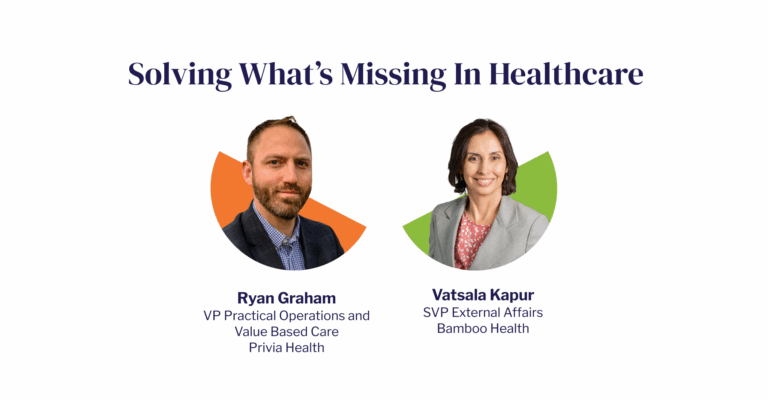According to HIMSS (Healthcare Information and Management Systems Society), interoperability “is the ability of different information systems, devices and applications (systems) to access, exchange, integrate and cooperatively use data in a coordinated manner, within and across organizational, regional and national boundaries, to provide timely and seamless portability of information and optimize the health of individuals and populations globally.”
As extensive as that definition is, its length pales in comparison to its importance. Without interoperability, patients’ medical records can be lost in the continuum of care, timely admission, discharge, and transfer information isn’t timely at all, and real-time care notifications are nearly impossible.
Quite simply, interoperability is the key to unlocking coordinated healthcare.
That’s why, here at Bamboo Health, we’re making a substantial investment in it. We’re accessing and storing data, delivering it when and where it’s needed most, and making sure it’s seamless and shareable for payers and providers alike.
At last month’s HIMSS22 conference in Orlando, FL, Jitin Asnaani, our VP of Strategy and Development, sat down with Haley Walters, our Digital Marketing Manager, to discuss the specifics of our interoperability efforts. Here’s a partial, rough transcript of that conversation.
Haley
“As a nation, we’re now more connected than ever. Why might our audience not be feeling the benefits from that [level of interoperability in healthcare]? Why are we still having this fragmented care?”
Jitin
“We are actually really well connected, largely, as a country. The issue is, we’re now at this inflection point, where the emphasis has to turn towards, how do you utilize that data in a way that’s actually driving an action for me? I’m going to call this actionable interoperability. We’ve not actually started doing work so that me, as a provider, as a payer, as a patient, as whoever, I can see my workload drop. The data just didn’t get exchanged; It got exchanged at a time, at a place, to the person, with the right technology around it, so that it actually scheduled the patient. So that it actually did things for me [automatically and electronically], which I do today in a manual way.”
Haley
“Can you tell us where actionable data actually benefits the end user, the patient?”
Jitin
“Until about three years ago… If you were almost at the leading edge of interoperability, what you were doing was connecting two points together. I’m a PCP. Somebody from the emergency department is pushing me a discharge summary. Maybe a specialist is pushing me a clinical chart. That was the state of interoperability, and it took a long time for us to get there. That’s where maybe a lot of U.S. healthcare in interoperability still is. Now, if the right person [on a care team] knows at the right time that I have got to follow up with that patient, and get them to the PCP, I’ve suddenly done two things. I’ve done work for them, taken work off their plate so they can handle more patients. Not only that… The PCP is now getting this scheduled patient with information from the care manager. Now they actually have context.”
Haley
“Where could you see interoperability transforming into and going?”
Jitin
“I see three things happening:
1. That spigot is only open to providers. The data has to flow to all of the other stakeholders too, public health, payers, etc.
2. It really comes down to adoption. Providers, digital health companies, existing technology organizations, state governments, and so on must adopt it.
3. A full job is done from the moment the patient leaves the ED to the point they’ve been scheduled and referred—there are gaps that we’ve closed—and the provider has done nothing but spend time with them on the clinical aspect. The administrator has done nothing but collect the right payment information. That is end-to-end interoperability that the [end] user will feel.”
To see Haley’s full interview of Jitin, click here.
To learn more about us and our interoperability-related solutions, click here.



